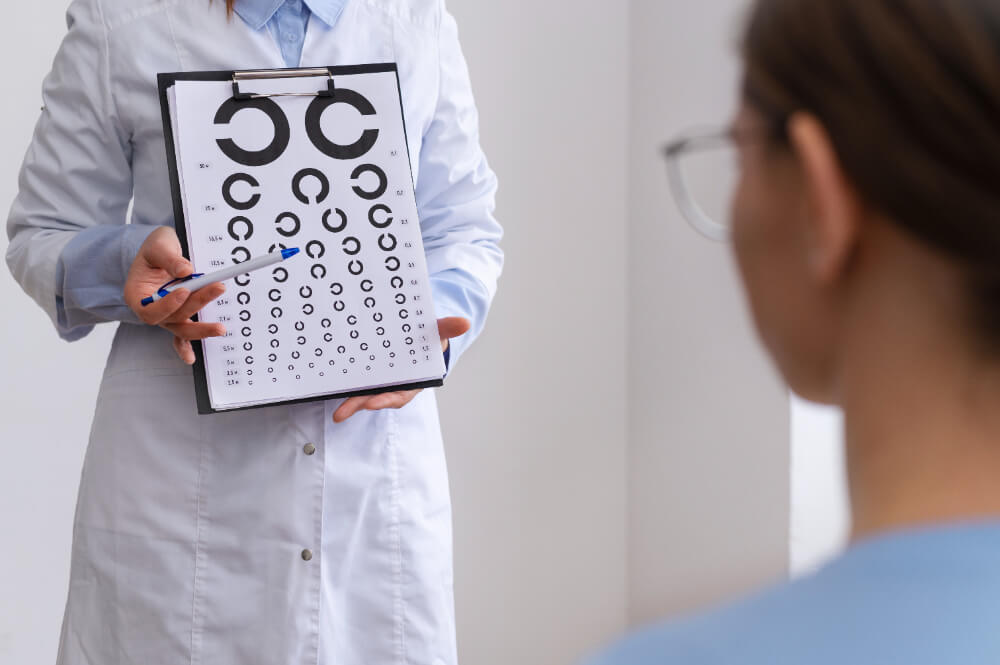The Importance of Vision Testing in Occupational Medicine
Vision is a critical sense for most jobs, impacting everything from safety and productivity to overall job satisfaction. Occupational medicine recognizes the importance of vision in the workplace and incorporates comprehensive vision testing into its employee health programs. These screenings aim to identify potential vision problems that could impact job performance, increase the risk of workplace accidents, or adversely affect employee health.

The Importance of Vision Testing in Occupational Medicine
Why Vision Testing Matters in the Workplace
Vision is a critical sensory ability that impacts job performance, safety, and overall productivity. Employees in certain roles, such as machine operators, drivers, and healthcare professionals, require optimal vision to carry out their responsibilities effectively. Poor vision can lead to accidents, errors, and reduced efficiency, making vision testing essential in occupational health programs.
Key Benefits of Vision Testing
- Enhancing Workplace Safety: Regular vision assessments help identify issues that could lead to workplace accidents.
- Improving Productivity: Workers with clear vision are more efficient and less prone to mistakes.
- Early Detection of Health Issues: Vision testing can reveal underlying medical conditions like diabetes or hypertension.
- Compliance with Regulations: Many industries are mandated by law to conduct vision tests for employees.
Types of Vision Tests in Occupational Medicine
1.Visual Acuity Tests Visual acuity tests measure the sharpness of an individual’s vision. These tests determine the smallest letters a person can read on a standardized chart, such as the Snellen chart, from a specific distance.
- Method: The test involves reading letters or symbols of varying sizes from a distance.
- Applications: Commonly used for roles requiring precise vision, such as pilots and surgeons.
2.Color Vision Tests Color vision tests assess the ability to distinguish between different colors. This is particularly important for professions like electricians and graphic designers.
- Method: Tools like the Ishihara test are used to identify color deficiencies.
- Applications: Ensures safety in roles involving color-coded signals or wiring.
3.Depth Perception Tests Depth perception tests evaluate an individual’s ability to judge distances and spatial relationships.
- Method: The test typically involves identifying the relative position of objects.
- Applications: Crucial for drivers, crane operators, and surgeons.
4.Peripheral Vision Tests Peripheral vision is the ability to see objects outside the direct line of sight. This test assesses the extent of an individual’s field of vision.
- Method: Automated perimeters or confrontation techniques are used.
- Applications: Important for security personnel and drivers.
5.Visual Field Tests Visual field tests measure the complete scope of vision and detect blind spots or other abnormalities.
- Method: Tools like Humphrey field analyzers are commonly employed.
- Applications: Beneficial for diagnosing glaucoma or retinal conditions.
The Role of Vision Testing in Occupational Health
- Promoting Workplace Safety:
- Reduced Risk of Accidents: Impaired vision can significantly increase the risk of workplace accidents, such as falls, collisions, and injuries from operating machinery.
- Enhanced Situational Awareness: Clear vision is crucial for tasks requiring attention to detail, such as operating heavy machinery, driving, and working with hazardous materials.
- Improving Employee Productivity:
- Increased Efficiency: Good vision is essential for performing many job duties accurately and efficiently.
- Reduced Errors: Clear vision helps to minimize errors and improve the quality of work.
- Increased Comfort: Addressing vision problems can improve employee comfort and reduce eye strain, leading to increased productivity and reduced absenteeism.
- Identifying Early Signs of Eye Diseases:
- Regular vision screenings can help identify early signs of eye diseases, such as glaucoma, cataracts, and age-related macular degeneration, allowing for early intervention and treatment.
- Complying with Regulatory Requirements:
- Meeting industry-specific regulations and guidelines regarding employee health and safety, which may include vision screening requirements for certain job roles.
Vision Testing for Specific Work Environments

High-Risk Occupations
-
-
- Drivers: Require clear distance vision and peripheral awareness.
- Pilots: Need excellent visual acuity, depth perception, and color vision.
- Surgeons: Depend on sharp vision and steady eye coordination.
-
Office Environments
Prolonged screen use can lead to digital eye strain. Regular vision testing helps detect and address issues like Computer Vision Syndrome (CVS).
Industrial Workplaces
Industrial settings involve hazards such as bright lights, flying debris, and chemicals. Vision tests ensure workers’ eyes are healthy and protected.
The Role of Occupational Medicine Professionals
Occupational medicine professionals play a critical role in implementing and managing effective vision screening programs.
- Developing and Implementing Vision Screening Programs:
- Working with employers to develop and implement comprehensive vision screening programs tailored to the specific needs of the workplace.
- Conducting Vision Screenings:
- Performing basic vision tests and referring employees with vision problems to appropriate eye care professionals.
- Educating Employees:
- Providing education and counseling to employees about the importance of good vision hygiene and eye safety.
- Maintaining Records:
- Maintaining accurate records of employee vision screenings and any identified vision problems.
- Staying Updated on Best Practices:
- Staying abreast of the latest guidelines and best practices for occupational vision screening.
Conclusion
Vision testing is an indispensable aspect of occupational medicine, safeguarding employees’ health, safety, and productivity. As industries evolve, integrating advanced vision testing technologies and practices will remain a priority for employers worldwide.
Reach out to our Occupational medicine services for comprehensive vision testing (972) 633-8747 or (972) 848-0873 Or visit us https://www.sccplano.com/
